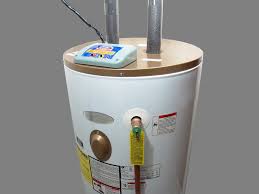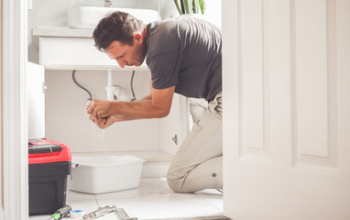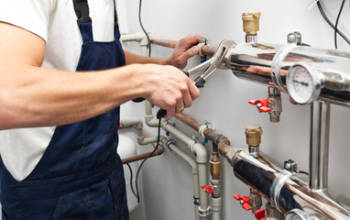Your water heater is usually out of sight and out of mind, but when it goes haywire, it can seriously disrupt your life. That’s why it’s important to know when it’s time for a water heater repair or replacement.

A common issue involves the dip tube. This is a pipe that transfers cool water from the top of the tank to the bottom. For professional help, contact Plumbers In Edison NJ.
Having a water heater leak is not only scary, but it can also cause serious damage to your home. If left unchecked, it can lead to major problems like mold growth or a flooding basement.
Fortunately, there are some common water heater repairs that homeowners can make themselves, even if they’re not very experienced. These simple fixes may help you avoid calling a plumber and save you money on repairs later.
First, it’s important to know where the water leak is coming from. The location of the leak will tell you a lot about the problem, and it’ll help you determine if it needs professional repair or can be fixed by a homeowner.
For example, if you see a puddle near the base of your water heater, it could be due to condensation. This is a common issue that occurs when the temperature of a room varies greatly from the temperature of your water tank.
Another cause of a water heater leak is when the storage tank has been cracked. This happens when minerals collect and calcify on the glass that lines the tank. The cracks in the glass can leak water, which can lead to damage and a need for water heater replacement.
This is also a good time to check the thermostat settings. If you set the temperature too high, it can cause your water heater to overheat. This can lead to the temperature pressure relief valve leaking and letting out water.
To fix this issue, you can turn off the water supply to your heater and then drain it by removing the drain valve located at the bottom of the tank. This will prevent further water waste and help you determine if the leak is from the drain valve or the internal tank.
The T&P relief valve on a tank-based water heater is designed to release water when the pressure inside the tank becomes too high. If you have water leaking from the T&P valve, it may be due to the pressure causing the valve to leak, or it could indicate that the valve is defective and needs to be replaced.
Corrosion is a natural process that occurs when metals corrode due to exposure to oxygen or water. It is a common problem for many products and can cause significant damage to your pipes and fixtures.
There are a few ways to repair corrosion on your water heater, but you should always contact a professional to help. This will help you avoid any further damage that can be caused by rust or other problems.
First, you will need to determine the cause of the corrosion. It may be as simple as a sacrificial anode rod that needs to be replaced.
This is a small piece of metal that sits inside the water heater and is meant to attract particles of limestone and other minerals in the water. Normally, these minerals would corrode the walls of your tank, but when you place this rod in the water heater, it draws those elements to the anode instead.
You will need to replace this rod every three to five years. You should also inspect it regularly, especially if you have a water softener system in your home.
Another way to prevent corrosion is to upgrade the nipples on your water heater. This will prevent brass and copper pipes from coming into contact with the steel lining of your water heater.
Lastly, you should always inspect your vent pipes for corrosion. If they are rusted, this could be an indication that you have a leaky connection. This leaking water can then lead to corrosion on the outside of your water heater.
Once you have determined the cause of the corrosion, it is important to fix it. This can be done by having a plumber examine your water heater.
The type of corrosion you have will depend on a number of factors, including the materials used and your location. However, there are a few common types of corrosion that you should know about.
Filiform Corrosion: This is a type of corrosion that happens when water breaks through coatings on metal surfaces. This corrosion is especially common in iron and can cause a wide range of problems, including metal loss.
Water damage is not only an unpleasant occurrence, but it can also lead to a variety of health problems, including mold growth. It can be very difficult to prevent water damage from occurring in your home, and it is best to act quickly if you notice any signs of water damage.
If you detect standing water, watermarks, or blistered paint on a surface, this is an indication that there is an issue with the water supply line or plumbing. If you don’t find the source of the water leak right away, you may end up with a larger problem down the road that requires professional help to resolve.
After a water leak is fixed, it is important to regularly check the area for any signs of water damage or mold growth. If the problem appears to be returning, make sure to contact a plumber to come out and look at the water heater.
Mold and mildew can grow at quick rates under favorable conditions, so it is essential to dry out the damaged area as soon as possible after a water leak. This can be done by using a portable dehumidifier, which helps reduce the moisture level.
It is also a good idea to use a HEPA vacuum cleaner and run the fan on it in the affected area, as this will remove any airborne spores. Once the spores have been removed, you can wash the affected area down with soap and water or a bleach solution of no more than 1 cup (8 ounces) of bleach in 1 gallon of water.
However, it is very important to keep in mind that even if the mold has been completely killed by the bleach solution, a background level of spores will remain. This can cause an allergic reaction in some people, so it is important to get rid of the spores as well as the dead mold.
When it comes to dealing with mold, you have to assess the severity of the issue by looking at the size of the patch of mold and evaluating its odor. If the patch is small and it has no odor, the mould is probably not causing any issues. On the other hand, if it is large and has a musty smell, this indicates that there are hidden mold problems within wall or ceiling cavities.
Electric water heaters are high-voltage (240-volt) appliances that can deliver a fatal shock, so they need to be handled with care. First, you should shut off the power at the electrical service panel before attempting any repair. You should also post a sign warning others not to turn it on while you’re working on it.
If you have an electric water heater, you might notice that the hot water doesn’t come out of it as quickly as it used to. This can be caused by several problems, but the most common is a failed heating element.
You may want to check for this by performing some simple tests on the water heater. You’ll need a multimeter to measure the resistance of one of the upper elements and the wiring that connects it to the thermostat.
To test the upper heating element, remove the insulation and plastic safety guard from the unit. Next, press the reset button for the high-temperature cutoff located above the thermostat.
After you’ve done this, it’s important to disconnect the upper element wires from their terminal screws and touch one probe to each screw in turn. If you see a resistance reading, the heating element is damaged and needs to be replaced.
Alternatively, you can check the wiring by running a meter across it. Then, you can measure the ohms of resistance to determine whether there is a short circuit between the metal cabinet and the supply wiring.
If there is a short circuit, there’s likely something broken inside the cabinet, so you need to find it and replace it before you restore power. It’s best to call a plumber to help you with this step.


